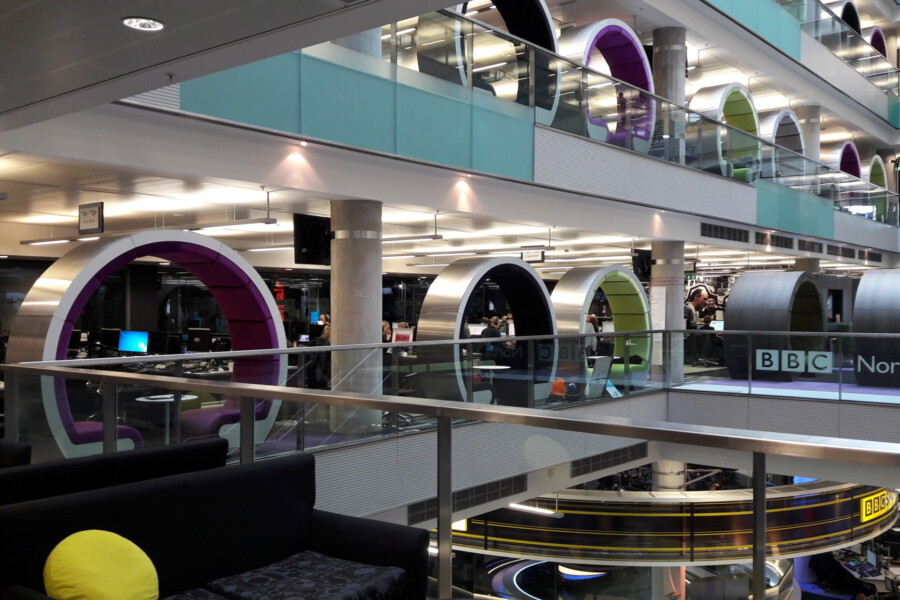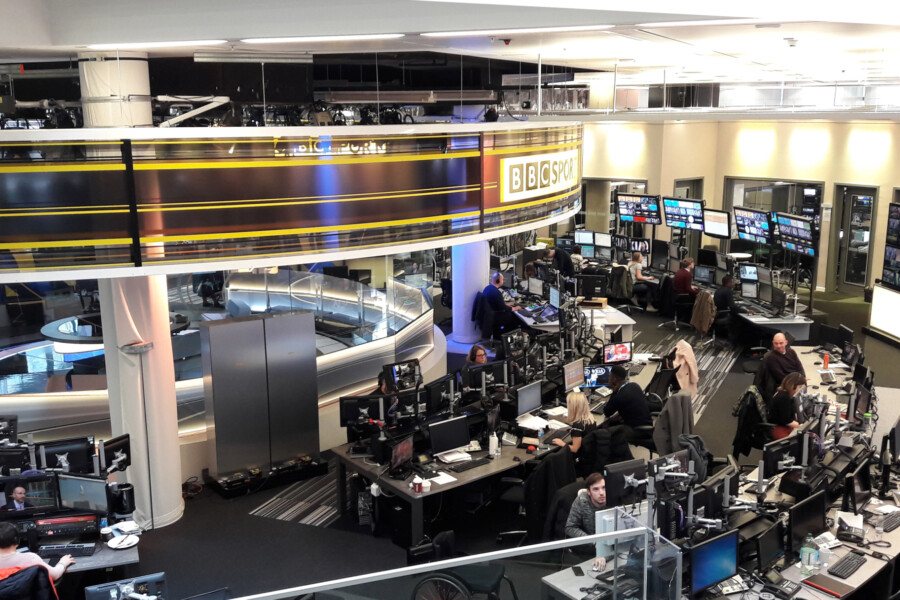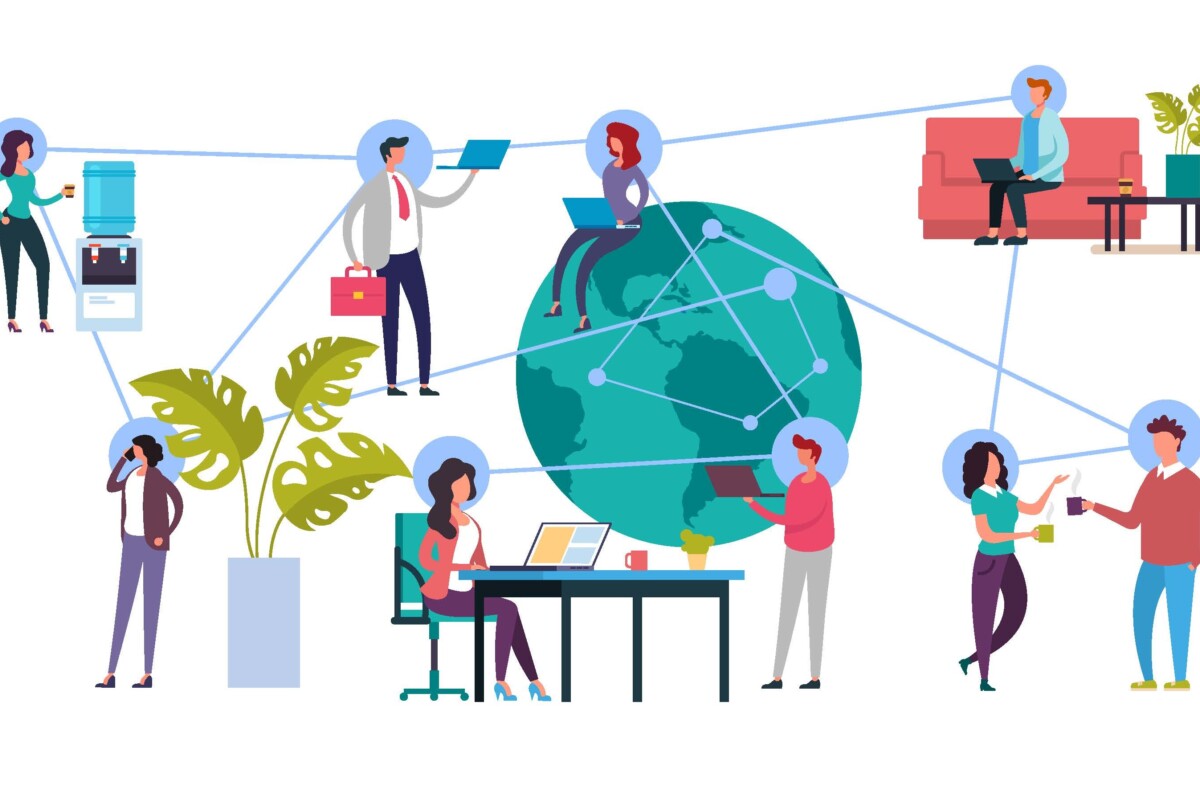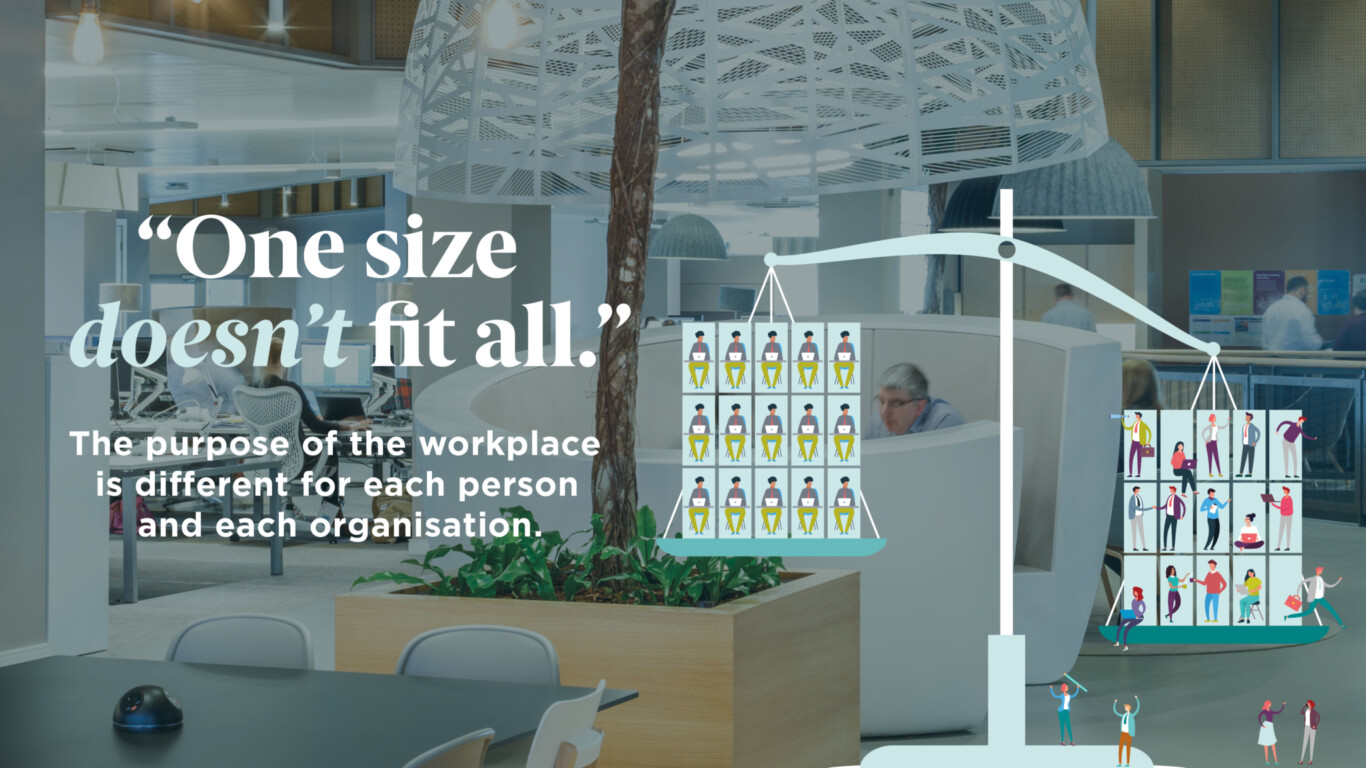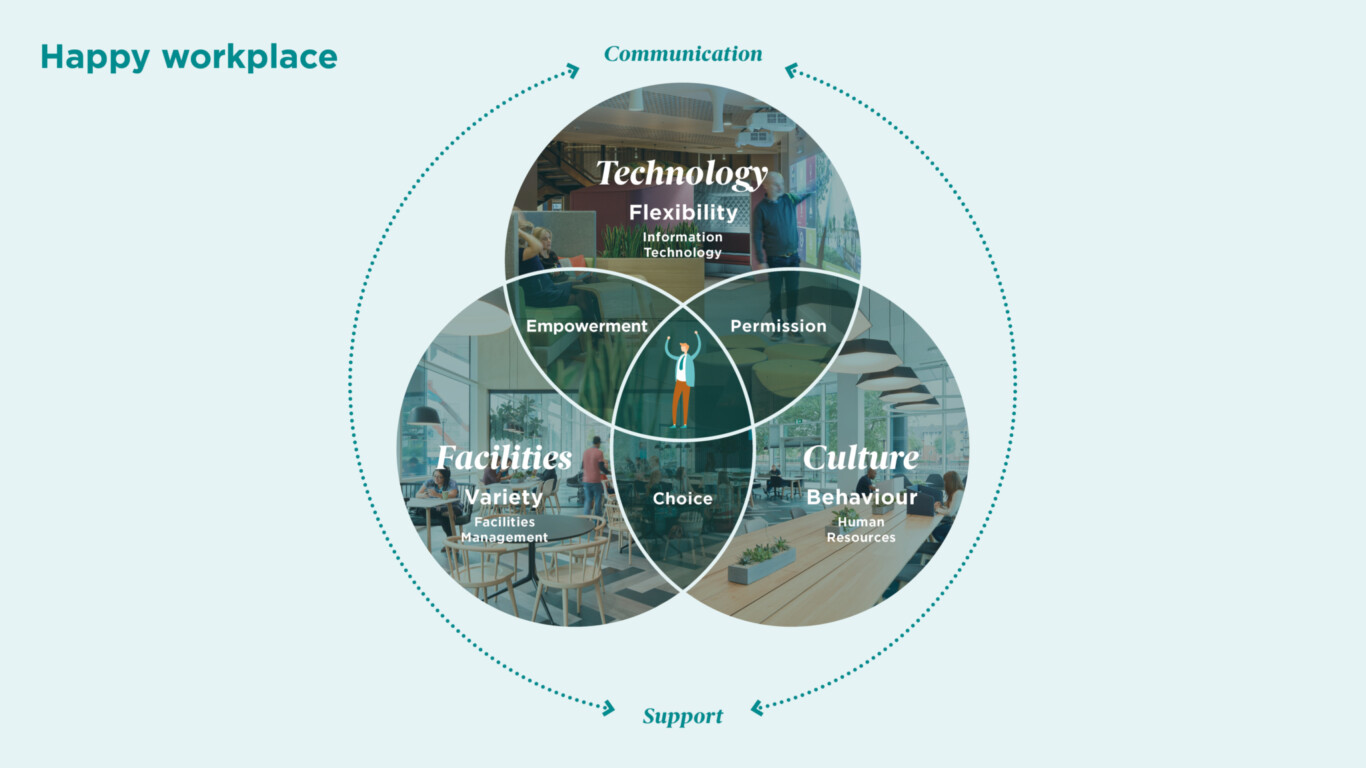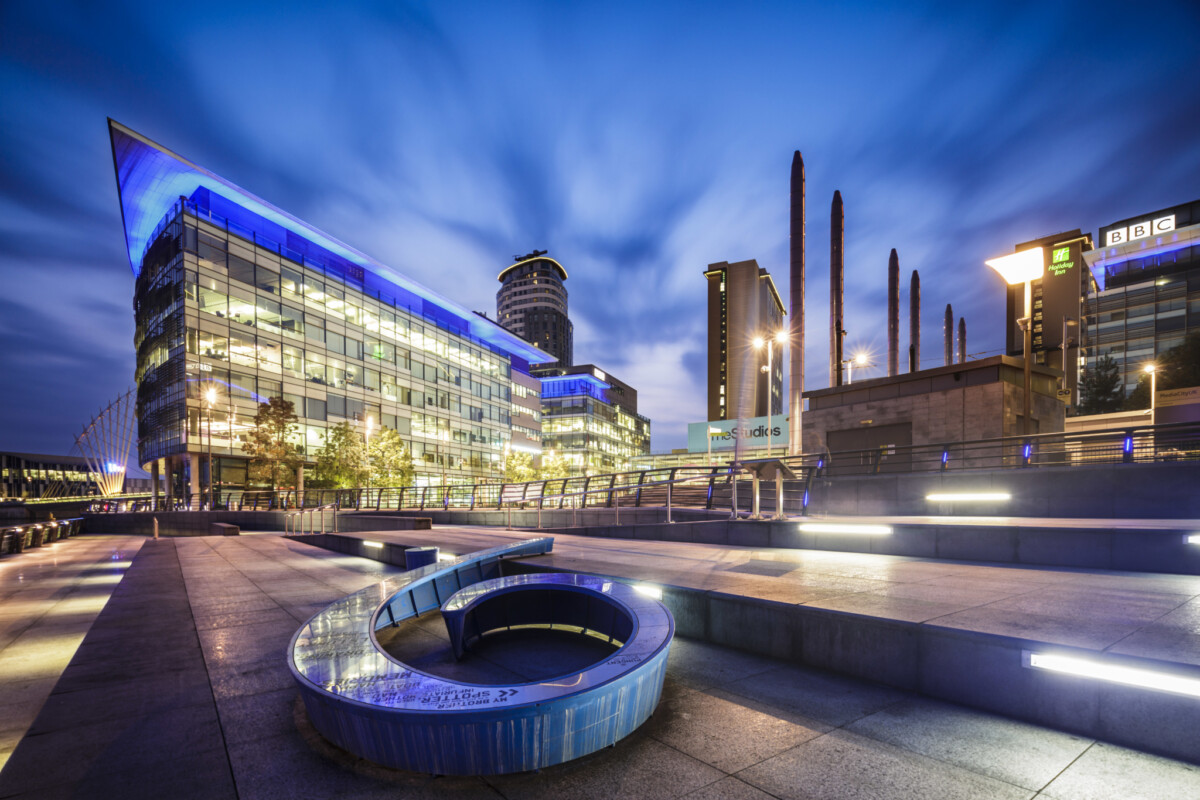
People profile: UK Director Gavin King on the importance of collaborative workplace design
Gavin King joined Chapman Taylor in 2021 to help reinforce and expand our capability in the workplace sector, in which he has more than 25 years of award-winning experience. In this profile, he talks about how important it is to listen to employees in creating an effective workplace and how the workplace will inevitably change, post-pandemic.
How did you get into workplace design?
I started doing a business studies degree at Leeds University, but soon transferred onto an art foundation course. When you discover something you like doing it becomes so much easier to enjoy studying. I ended up with a 1st class honours degree from Leeds University, which was around the time of the first recession in 1991. I then went to work in Hong Kong for a bit, before coming back to Manchester.
I soon realised it was workplace design that I liked doing the most. I liked speaking to people who were going to be using whatever it was we were designing. You can build a real connection; it means a lot to them. You can make businesses so much more efficient if you get the design right. So, the design supports the business. That struck home for me right from the start.
Tell us about your work history.
I worked for Abbey Holford Rowe, then BDP, then Sheppard Robson before setting up a consultancy called SpaceInvader Design with some friends.
At BDP we won the job to design the Deloitte offices in Manchester. That was the first time I got meaningfully involved in workplace design and started winning recognition, but most importantly it was making a difference to people’s lives in the business.
At Sheppard Robson, we won the commission to move the BBC to Media City in 2007. That was the point that I realised that workplace design is also change management – helping people to change what they do to work more efficiently. I developed a big interest in the subject!
“Change management helps identify how businesses can operate better”
Several of my commissions helped companies to understand how to use their space better and more efficiently. Helping people to work harmoniously so they’re not battling their environment; they’re not struggling to work.
At Sheppard Robson, when we moved the BBC to Media City, 1,600 roles were moving up from London and an amazing 50% of people took up the offer to relocate to Manchester. Why? Because we involved people in the design process. This is something that I’ve brought with me to Chapman Taylor. We need to show people they’re being listened to and see how their voices have helped design their own future. Good design happens with you and not to you.
Why did you join Chapman Taylor?
My remit is to further develop and build Chapman Taylor’s workplace design team, given my experience. But this goes hand in hand with change management and consultancy. I’m relishing the role of repositioning Interior Design as a significant offer that Chapman Taylor can bring to the Market. Although I loved the independence and design focus of SpaceInvader, I appreciate being part of a larger team more.
Interior Design shouldn’t be peripheral; it’s an integral part of our approach at Chapman Taylor. Interior designers make very good brief takers – we come at it from a very human level and we compliment architects with their bigger questions. We can make sure that what the architects create is the best environment to inhabit.
The UK is an excellent place to be doing workplace design – we’re not bullied by tradition and we’re not hierarchical – so there are lots of opportunities for creative responses to the problems businesses face.
Right now at Chapman Taylor we have several new clients where our role at the start is very much about defining what their workplace needs to be for them. Snapping back to the old status quo isn’t the answer, but nor is working from home. Every solution needs to be tailored to each workplace, right down to what works best for individuals based on their home situations. It’s a great time to be working in workplace design.
What’s key to understand in the design process?
We need to understand people’s fears. I’ve seen how reluctant academics can be to give up their offices, for example. So much of their career is invested in getting an individual office and what it symbolises. However, if you illustrate how the office is only used 10-15% of the time and all the embodied carbon that goes into creating that office, heating and cooling it; it’s environmentally unsustainable. Having lots of cellular offices is a very space-hungry solution. By working agilely, in the open plan, we’re able to answer the ‘real’ brief, which is to create great places to work, learn & thrive. It’s an opportunity/cost argument – it’s not how much that cup of tea costs it’s how much you could have spent had you not got a cup of tea. Apply the same logic to a space budget as you would a financial budget and the inevitable solutions come to the fore. We were very successful in getting academics to share space because they could see the overall benefit of it and understand the fuller picture.
“I’m infinitely curious about what people do”
We need to take briefs with employees in mind and not design in isolation. It’s an involved, iterative process, bringing people on board. We need to ask, “what do you do”, “how do you work”, “what do you do during your average day”, “what sort of environments would support you in doing that activity”?
When people realise that someone is actually interested in what they do it makes such a difference. I love to understand different roles and then instead of trying to shoehorn them into one working environment, perhaps consider a variety of different settings that might work better for them. We can get people enthusiastically contributing to their own future.
How do you see workplace design developing in the future?
Workplaces will need to strategically respond to complement hybrid working. Everything that we can do post-Covid, we could do pre-Covid. It’s just that people’s perspectives have changed. Covid did in 20 days what I was trying to do for 20 years. We can be flexible. Covid has forced companies to understand that the workplace isn’t just about people sat at desks.
“When the pandemic is over, we can’t just be an elastic band that snaps back to the way it was.”
We need to understand: what did we gain? What are the things that worked less well? We can then shape workplace design to suit what each workplace needs.
There are positives and negatives to homeworking. On the upside there’s less travel time, more hours spent with family and increased access to quiet time. You can get your head down and do some report writing without being disturbed (depending on your home circumstances though of course). This is less the case for families with young children or people sharing a flat. However, it’s harder to collaborate and to learn from your peers and mentors. Younger employees don’t get the same opportunity to learn from older ones by seeing how they handle their job; they don’t overhear telephone calls and conversations.
I did a survey with a Local Authority client about what people missed most about being in the office during the pandemic. Number one by far was social interaction. This is what the workplace should be. A place that reinforces who you are, who you’re working for, what are our core values, what is our culture and what do we hold dear. These things should be reinforced when people come into the workplace. People will increasingly be coming into work for defined activities and we can start to design workplaces that respond to those activities – collaborating, meetings, not sitting at desks for seven hours when that can be done from home.
Workplace design is all about empowering people to be able to choose how and where they do their job. If you trust people to do the job well, then they will do the job better. It’s empowering to be told by a manager that they don’t need to see you at a desk to know that they’re working. You feel trusted. Hopefully, presenteeism is a thing of the past.
Chapman Taylor has extensive experience in designing workplaces in the UK and overseas. Well-designed working environments can help to increase productivity and job satisfaction. We always focus on the specific needs of clients and their employees combining cutting-edge thinking on workspace design with commercial credibility and operational efficiency. Our experience across a variety of development sectors means that we are ideally placed to cut and carve office schemes to add other uses such as leisure and F&B.
We know how important it is to future-proof office designs so that they can adapt quickly to the incredible pace of change in the sector. We make use of space so that letting value is maximised. Our global team has a wealth of knowledge and experience in designing dynamic and complex solutions, with the resources to implement them.
